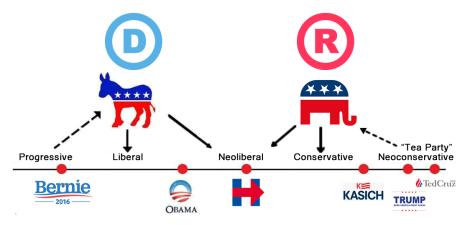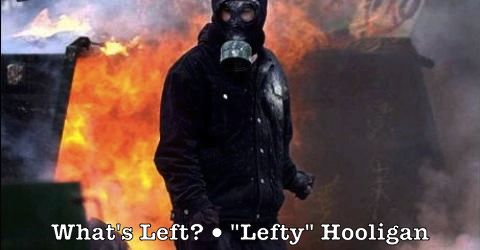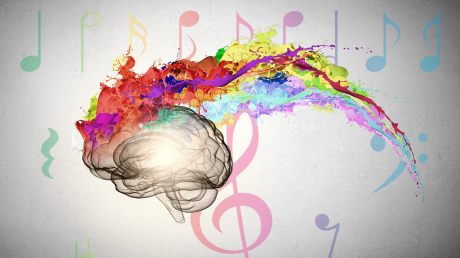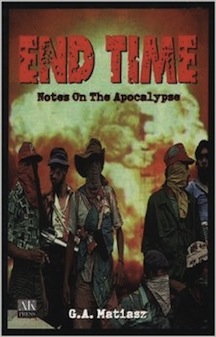
It’s called “sweetening.”
It’s a certain type of background music and ambient sound for films and TV shows meant to enhance mood and emotion. It’s also called juicing, but it’s intended to be subtle, behind the scenes, muted. Sweetening is not supposed to be too obvious. For instance, when a live audience is recorded anywhere, a laugh track/canned heat track is frequently blended into the live audience track to amplify its effect, whether of laughter, clapping, booing, whatever.
The term has its origin in old-time radio, when sound effects like horses galloping, doors opening and closing, characters walking, gunshots, etc. were used to paint visual detail in a non-visual medium. Again, it’s not all dramatic sound effects. In films and TV shows, it’s not the sound of violent explosions or roaring monsters. The sweetening is in the sense of foreboding portended in the background music, or in the subsonic infrasound used to generate apprehension in the audience prior to some climactic scene. So while “sweetening” comes off good and positive, it might as well be called “shadowing” or “darkening,” depending on what effect the sound is intended to enhance.
As for political sweetening, two recent examples come to mind. The Tea Party ended up sweetening the Republican Party from the right, as did Bernie Sander’s “political revolution” the Democratic Party from the left. Both movements started as popular revolts against their respective party establishments and their mainstream politics, both helped rewrite their respective party platforms, and both moved the politics of those parties respectively to the right and left. Both threatened to break away to form independent third party efforts, both were blamed for the potential demise of their respective political parties, but both ultimately succumbed to political opportunism, cooptation, and marginalization. Or at least the Tea Party succumbed and wound up faking a hard-times protest movement, spawning affiliated get-rich-quick cottage industries, and successfully rebranding the GOP. Bernie’s “political revolution” has blended nicely into the much broader anti-Trump protest movement, so it remains vibrant and very much in the streets. Ideally, this popular resistance needs to avoid opportunism, cooptation, and marginalization, but that’s very difficult to do if the Tea Party is any indication.
What doesn’t count as political sweetening was Occupy Wall Street. OWS doesn’t count for much at all now, despite initially being praised by authors, artists, celebrities, politicians, and pundits as the greatest thing since sliced bread. I’ve never hidden my disdain for OWS. It may have personally changed lives like the bad brown acid circulating at a mediocre rock concert, but it was just a flash in the pan that changed little politically. So unless the inane consensus hand signals and annoying human microphone are included, no innovation of any consequence arose from OWS. That also covers the communizing “occupy everything, demand nothing” campus activism that emerged among protesting California students in 2011.
OWS ran with the franchise activism common nowadays, where an indistinct idea was widely disseminated and then taken up by local activists who made it their own through locally flavored community actions. The movement’s core idea, embodied in its name, was so nebulous in fact that it produced both the anarcho/ultraleft, black bloc, streetfighting Occupy Oakland, California, and the virulently antisemitic, conspiracy-theorist, ultraright Occupy Tallinn, Estonia, with every political combination in between. So while the majority of OWS-affiliated actions tended leftwing, liberal, and even anarchist, there was considerable involvement by rightwing, conservative, and even fascist elements. In this way, OWS displayed troubling Left/Right crossover politics similar to the anti-globalization movement which preceded it. This was not by chance but by design, given the decentralized, all-are-welcome nature of the movement’s organizing message. This was complemented by the ambiguous categories employed by OWS, most prominent being “the 99%” versus “the 1%.” This promoted an uncritical populism that studiously avoided any class-based analysis, but it denied any identity-based analysis as well, instead encouraging an amorphous, dumbed-down, Hardt/Negri-style notion of “the multitude.”
When finance capital comes to the fore, capitalism itself is in decline. Capitalism has abandoned industrial production for financial circulation, meaning that its profit-making comes not from surplus value transformed into capital but from mere exchange. For OWS then to focus its vague critique of capitalism on Wall Street and finance capital was to target a decaying economic system as if it were still robust, misinterpreting capitalism’s retreat as a faux advance. To see the enemy as attacking rather than as withdrawing was a delusion that badly skewed the tactics and strategy required to take on and defeat that enemy. If nothing else, this falsely portrayed finance capital as stronger and more powerful than it actually is, reinforcing the rightwing trope that “international bankers” rule the world. Excuse me, “banksters.” From this, it’s a half-step to the “international Jewish conspiracy for world domination” that is the ultra-right’s favorite meme.
Spencer Sunshine has written a detailed survey called “20 On The Right In Occupy” through the Political Research Associates think tank which provides thumbnail summaries of anti-Federal Reserve, antisemitic, white nationalist, fascist, and neo-Nazi individuals and groups involved in OWS. These strange right and left bedfellows in OWS are not so odd once we realize that antisemitism is also on the rise on the Left. Case in point, the post-Situ Adbusters Magazine from which the original OWS call came. From Kalle Lasn’s Adbuster article discussing fifty influential neoconservatives under the title “Why Won’t Anyone Say They Are Jewish?” to Adbuster tweets that took up the alt.right’s outing of twitter users as Jewish by surrounding their names with parentheses, Left/Right crossover politics abound. Not that Adbuster’s leftist politics aren’t sketchy in so many other ways, what with their support of Israeli antisemite Gilad Atzmon and Italian conspiracy theorist Beppe Grillo. They do act as a political transition to the hard Left’s anti-Israeli, anti-Zionist ideologies, which too easily and too often become outright Left antisemitism.
Back to my point earlier, there are people who are not at all happy that Bernie’s “political revolution” has blended nicely into the much broader anti-Trump protest movement. These folks are the mainstream Democratic Party establishment liberals who blame Sanders and his “BernieBros” for Hillary Clinton’s defeat. Salon executive editor Andrew O’Hehir had a wonderfully sarcastic takedown of their status quo recalcitrance awhile back:
But another running theme in Democratic Party apologetics informs all that, which is the ingrained desire to blame the left-wing resistance for anything that goes wrong — and to insist that it isn’t actually the left at all but sort of, kind of, the right. Hence Wolcott’s argument that the DudeBros and ‘purity progressives’ of the ‘alt-left’ are in some undisclosed manner closely related to the rebranded white supremacists of the alt-right. Or maybe it’s just that he doesn’t like either of them.
To return to our central premise: The DudeBros ruined everything. Their workings are malicious, and marvelous. They are simultaneously clueless, puritanical and all-powerful. In between Ultimate Frisbee tournaments and Vampire Weekend marathons, they elected Donald Trump, wiped out the Democratic Party between the coasts, rioted against Milo Yiannopoulos in Berkeley and/or defected to the alt-right en masse. They develop apps whose functions remain mysterious, and that most of us don’t know how to use. Unforgivably, they made the Phish reunion possible, and now it will never stop.
Hence, conflating “terrorist” James Hodgkinson with “crazy” Jeremy Christian, or antifa “alt-left” with fascist alt-right.
The Democratic Party establishment wants the anti-Trump resistance to be a leftwing Tea Party, the energy, individuals, and organizations of which the party can exploit to win future elections, while ultimately domesticating, coopting, and marginalizing that resistance. They want the Left’s resistance to be the Democratic Party’s sweetening. This is exactly what we don’t want to happen if we want the anti-Trump resistance not to suffer the same fate as the Tea Party.
Of course, it’s much more complicated than “Bernie or Bust” versus the Democratic Party. Politics to the left of the Democratic Party also includes progressives, democratic socialists and social democrats, Leninists, and the black bloc anarcho/ultraleft. But it’s never been an equal playing field with the Democratic Party vis-à-vis the rest of the American Left. The Democrats are the 800-pound gorilla in the room. Even decimated, at their lowest point in fifty years, the Democrats continue to wield vast power and influence. Which is why we need to prevent the vilification of the black bloc or the BernieBros or Jill Stein’s Greens or anyone else as a convenient scapegoat for the Democratic Party’s mistakes and woes. I’m not so naïve as to think what we need is a united or popular front; some mystical kumbaya circle jerk of leftist unity. But we don’t need the Democratic Party and its liberals running the show either.
November 1, 2017
Categories: anarchism, anarchists, anti-globalization movement, Democratic Party, fascism, GOP, holocaust denial, left communism, Marxism, Oakland Commune, Occupy Wall Street, Politics, Republican Party, socialism, Tea Party, ultraleftism . Tags: "the multitude", 1%, 99%, Adbusters, anarchism, anarcho/ultraleft, Andrew O’Hehir, anti-Federal Reserve, anti-globalization movement, anti-semitism, anti-Zionism, antifa, Beppe Grillo, Bernie or Bust, Bernie Sanders, BernieBros, canned heat track, Democratic Party, Donald Trump, fascism, Gilad Atzmon, Green Party, Hardt/Negri, Hillary Clinton, infrasound, James Hodgkinson, Jeremy Christian, Jill Stein, Kalle Lasn, laugh track, Left/Right crossover politics, Milo Yiannopoulos, neo-Nazism, Oakland Commune, Occupy Wall Street, OWS, Political Research Associates, political sweetening, post-Situ, Republican Party, Salon, Spencer Sunshine, subsonic, sweetening, the Tea Party, ultraleftism, white nationalism . Author: leftyhooligan . Comments: Leave a comment











